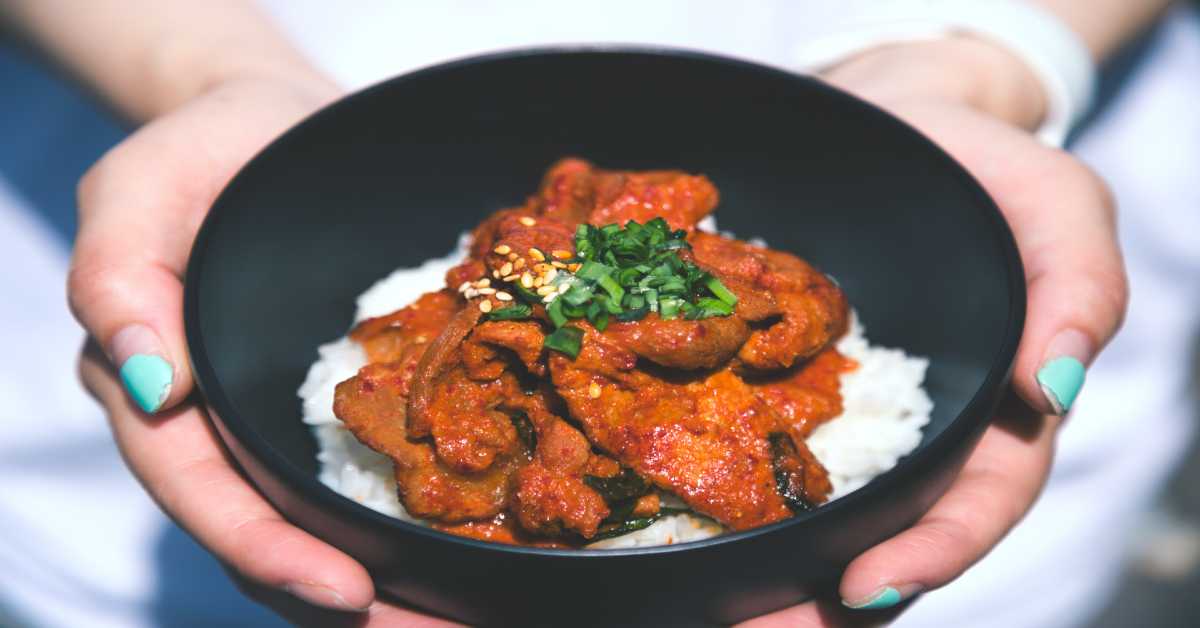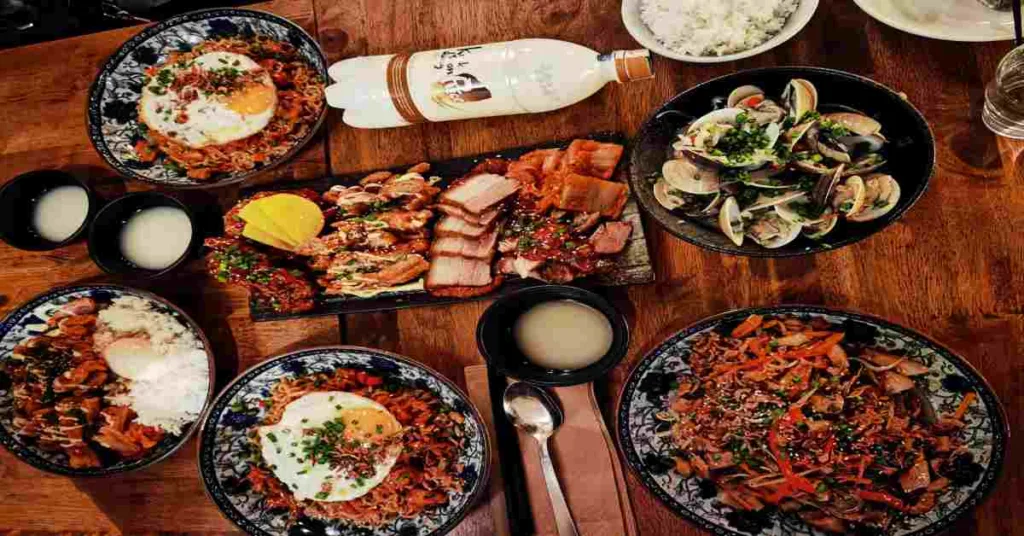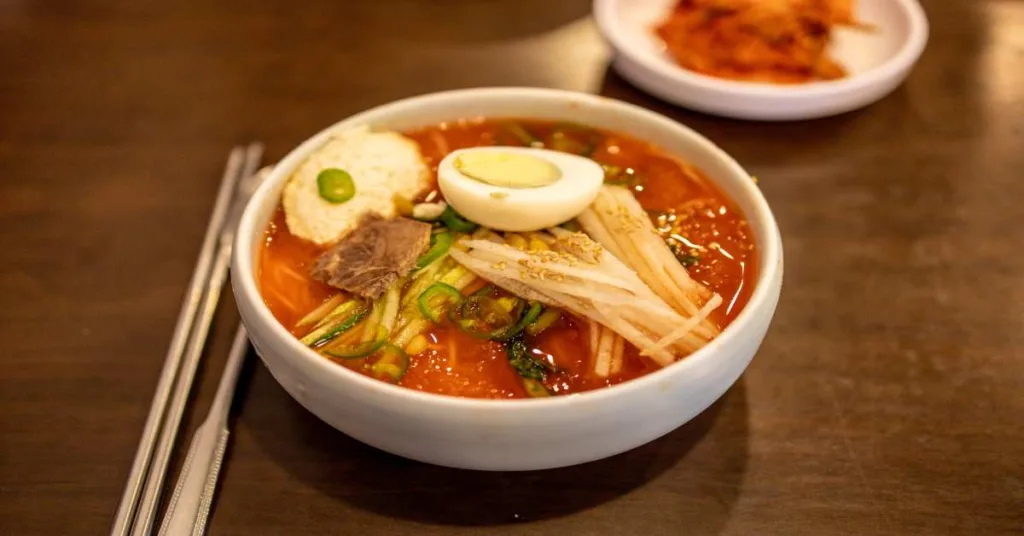Bulgogi (Korean BBQ Beef) is a Famous Korean food
If you’re looking for quick and authentic Korean food, try this effortless cuisine. The finest marinade ever is used in this super straightforward Korean barbecue beef meal. The beef is extremely soft and cooks in thin slices quite rapidly.
Contents:
- What is Bulgogi?
- What Cut of Beef is best for?
- Varieties of Beef Bulgogi
- How to make Bulgogi sauce at home?
- Recipe
- What to serve with Beef Bulgogi?
What is Bulgogi?
Traditional Korean BBQ beef is known as “bulgogi” where “Bul” means “fire” and “Gogi” means “meat,” which suggests grilled beef on fire and is cooked with thin beef slices and a tasty marinade. However, over time, its meaning eventually altered to mean the spice applied. With this traditional beef bulgogi recipe, the meat will be juicy and soft while cooking quickly. This recipe does not require oil. Onions and garlic are frequently added to the grill with the meat to enhance flavour.
Traditionally, the meat is eaten with ssamjang and is wrapped in lettuce. In 2011, a reader survey conducted by CNN Travel named bulgogi as the 23rd most delectable cuisine in the world.
Koreans used to cook their meat directly over the flame in their outdoor kitchen. They grilled the meat by placing a layer of thinly sliced flesh between two mesh screens and held them over the flames. A great final product is created by mixing the BBQ’s smoky flavour into the grilling process.
In Korean cuisine, there are numerous varieties of recipes with various meat options. Other well-known bulgogi meals include chicken and pork versions. But the best ingredient in every Korean bulgogi dish is beef. You shouldn’t miss it because it’s a classic.
Serve this delicious beef bulgogi over lettuce or with rice.
What Cut of Beef is best for Bulgogi?
The tender beef cut is frequently used in Korean BBQ in the form of thin slices. The best types of meat to use for this bulgogi recipe are rib-eye or sirloin. It is available at any well-stocked Asian grocery store or Korean store.
Korean-cut frozen beef slices are conveniently available in the frozen department of Korean supermarkets. Make careful to thaw it out in advance. If it is frozen solid, it can take a whole day in the refrigerator.
Instead, freeze a piece of beef sirloin for 20 minutes to gently firm it up if you can’t find pre-sliced meat. Then, cut it against the grain of the flesh in extremely thin slices.
Varieties of Beef Bulgogi
Korean bulgogi comes in a variety of flavours. In Korea, the way that bulgogi is prepared differs depending on the location.
- Bulgogi in Seoul style: Seoul-style bulgogi, in contrast to the Korean beef that most people are familiar with, is marinated in a sea kelp stock broth. A unique dome-shaped pan with holes and a flat bottom is used to fry the beef.
The meat juices and broth can flow down because of the dome shape. It tastes so good drizzled over rice. This Seoul-style Korean beef is frequently cooked with Korean noodles (Dangmyun), mushrooms, and vegetables.
- Crispy: Crispy Bulgogi does not produce luscious broth as Seoul-style does. On the outside, it is crunchy. The Jeolla Province of South Korea uses this cooking technique frequently.
- Classic: A delicious sauce marinated with thinly sliced meat. The beef in bulgogi traditionally has to marinate for a few hours to become soft and absorb all the flavour of the marinade. Some people like to cook their beef with veggies like carrots or peppers and mushrooms but then it will not be considered authentic.
How to make Bulgogi sauce at home?
Korean beef bulgogi is all about marinade, so choosing the best bulgogi sauce is essential to getting the greatest results. Compared to store-bought versions, homemade sauce is far better and is also easy to make.
Ingredients:
Korean Pear
Kiwi
Gochujang
Rice wine
Brown Sugar
Pepper
Sesame oil
Korean tuna sauce
Onion & Garlic
Soy sauce
Firstly, blend the pear, kiwi, onion, and garlic until very smooth in a blender. Then in a large shallow pan, combine the onion/fruit puree with the soy sauce, tuna sauce, gochujang, rice wine, brown sugar, pepper, and sesame oil. Stir well.
This marinade sauce can be prepared in advance and stored for up to a week in the refrigerator.
TIPS:
Use a little of this highly acidic fruit because it quickly makes the beef tender. Use half the amount called for in the recipe if you want to marinade the beef for longer than 4 hours. The same quantity of pineapple slices works just as well as kiwis to tenderize the meat.
Recipe
Step1: Prep the beef
To get rid of the additional red myoglobin on the beef’s surface, dab it with a paper towel. If the beef was frozen for an excessively long time, it helps get rid of the gamy smell.
Step2: Marinate the beef
Slice the steak into thin pieces, then add the beef to the marinating liquid. With a mild massaging motion, gently toss everything together by hand. Place a cover on the dish and marinate for up to overnight.
Step3: Cook marinated beef
A skillet should be heated over high heat to a very hot temperature. Add no vegetable oil! beef should be added.
Onion, green onion, or Asian leeks in slices may be added as a garnish. If you want it to be more healthful, you may also add thinly sliced carrot or pepper, but then it won’t be traditional.
Step 4: Cook the beef with its own marinade.
The moment the steak reaches the heated griddle, it should sizzle. In its own juice, let the meat simmer. Cook the meat for two to three minutes, turning it around to ensure even cooking.
It ought to cook in a flash. Sesame seeds and green onions can be added as a garnish.
What to serve with Beef Bulgogi?
If you like it as an effortless one-bowl dinner, such as a Korean beef bulgogi bowl, place it on top of the white rice and serve it with Kimchi (or another vegetable side dish) on the side.
Do you want to dress it up? To make wraps, try them with lettuce leaves and ssamjang. A side of doenjang jjigae will give the entire meal a really realistic Korean flavour.
You could read about Chinese Famous Food
https://worldviajar.com/archives/category/blog/chinese-food


